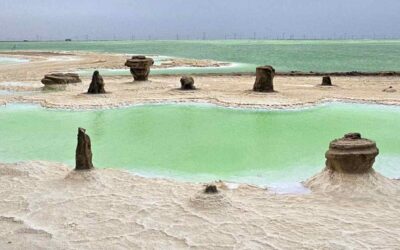Zhuang Nationality in Wenshan Prefecture
Wenshan Zhuang and Miao Autonomous Prefecture lies in the eastern section of Yunnan Province. Scarcely visited by local and international tourists with populations not considered of enough interest by the academic world, is one of the less known prefectures of Yunnan province.
Far from this superficial picture, Wenshan Prefecture possesses an ethnic diversity that makes it one of the most interesting places to travel. Wenshan Prefecture is mainly populated by Zhuang, Miao, Yi and Han nationalities. Any of these nationalities have well differentiated branches, we will introduce here the main branches of the Zhuang.
As is evident to every person that has traveled in the prefecture, there is a great variety of peoples included under the name Zhuang. In fact, among the suggestions to denominate Wenshan prefecture in 1957, three proposals were forwarded:
- To call it Wenshan Zhuang and Miao Autonomous Prefecture.
2. Wenshan Bu Nong, Bu Ya and Miao Autonomous Prefecture.
3. Wenshan Nong, Sha and Miao Autonomous Prefecture.
At the end, as everybody can guess, the first one was chosen. Maybe the reader is now wandering what means Bu Nong, Bu Ya, Nong, or Sha.
All these names are related to the three Zhuang branches that inhabit Wenshan Prefecture: Nong, Sha and Tu.
Most of the Zhuang of Wenshan belong to the Nong branch, about 600,000 people who constitute 50-60% of the total Zhuang population. They call themselves Bu Nong or Bu Xiong, and they can be found in every county of Wenshan. There are also interesting differences among them, which makes them to be known as:
– Nong Dau or Dau, in Guangnan County.
– Nong Yang or Yang in Xichou and Malipo counties.
– Nong Du or Du in Maguan County.
– Nong Dai or Dai in Guangnan County.
– Nong Chun in Maguan County.
The Sha branch has a population of around 300,000 people. They call themselves in different ways, a variation that is reflected in their dresses.
– Bu Yai
– Bu Ha.
– Bu Yue.
The third branch, the Tu, has a population of 100,000 people, and they call themselves Pu Dai. According to their headdress they are divided in:
– «Flat Headdress» Bu Dai or Tu.
– «Piled headdress» Bu Dai or Tu.
– «Pointed headdress» Bu Bai or Tu.
All those who have traveled to Wenshan, and have found that the ethnic clothes of the Zhuang were a labyrinthic issue, now can understand that they reflect an ethnic richness maybe not considered before.
This information has been extracted of the book:
Wang Minfu and Eric Johnson.- Zhuang Cultural and Linguistic Heritage, Yunnan Nationalities Publishing House. Kunming, 2008.
Image: Author’s photograph taken in 2005.
Last posts
Discover China’s Largest and Most Beautiful Salt Lake
Discover China’s Largest and Most Beautiful Salt Lake The development of tourism and transportation in China is bringing to light places that were previously very hard to access and virtually unknown. Some of these destinations are beginning to gain a certain...
A Giant Mandala in the Heart of Tibet
A Giant Mandala in the Heart of Tibet The Palkor of Gyantze is one of Tibet’s great marvels and a unique jewel of universal architecture and art. Its shape, scale, and iconography defy comparison with any other construction. Amidst some of the highest mountains of...
The Largest Collection of Paintings from ancient China
The Largest Collection of Paintings from ancient China No one doubts that pictorial art has existed in China since time immemorial. In fact, some painted pottery vessels, several thousand years old, continue to intrigue archaeologists who try to unravel their ultimate...







